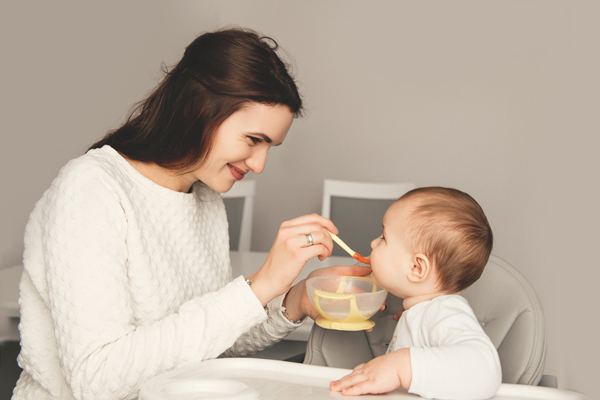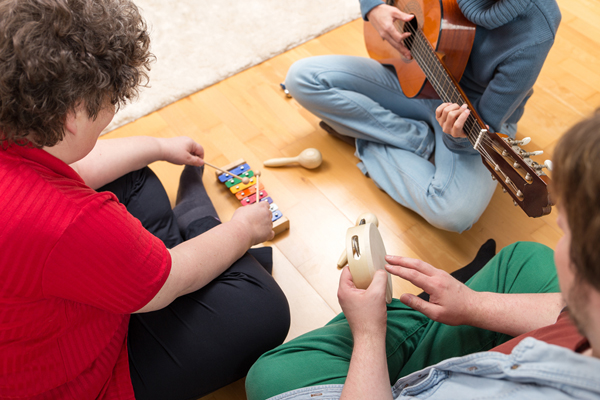Circle Speech - Small Talk

Language Development
- Subscribe to this category
- 17 posts in this category
This is a piggy-back post to my recent blog about understanding sensory processing differences in kids. With the holidays approaching, families are asking what toys will best promote play and language skills.
First, let me say that less is more when it comes to toys. Too many brightly-colored toys packed into a space can be overwhelming and cause children to become over-stimulated.
Also, toys with bright lights and sounds can be distracting and passive. You don't want to spend your time and money on a toy that only requires that your child watch and push the button. You want interactive toys that require your child to engage with a toy.
Look for toys that are open-ended. The market is flooded with toys that tell your child how to play or that only offer one way to play. Open-ended toys engage a child's imagination. They can be anything and their function can change from day to day. (Think cardboard box).
"Top 10 Open-Ended, Interactive and Worth the Money SensoryToys"
1) large wooden beads
2) wooden blocks (of various shapes and sizes)
3) sturdy play kitchen supplies
4)Bilibo (www.bilibo.com) The ultimate open-ended toy
5) dough (homemade or of the play variety)
6) paint, brushes, sponges and plain paper
7)kinetic sand (www.wabafun.com)
8)Magna-Tiles (www.magnatiles.com)
9) Tinker Toys (Caveat: Many of the recently made "tinker toy" brands are not well made and, in my experience, break and crack easily) Try the "Makit" brand.
10)Squigz (www.fatbraintoys.com)
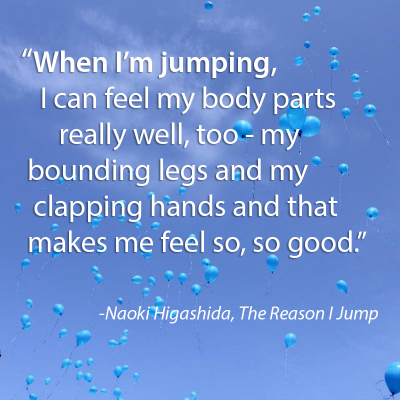
The moving is necessary. The flapping and the spinning helps shake free new thoughts and calm emotions. Or so I'm told, by young adults who are my clients. And by older adults, who were once children told to stop spinning, flapping and pacing.
What we call sensory processing differences are felt by many children and adults as a numb sensation (under sensitivity) or a pain sensation (over sensitivity). Many have a mixture of the two sensations-sounds are too loud but feet need to stomp to be felt.
Can you imagine conducting your life with that set of rules?
When we jump or spin or hang upside down, our body sends messages to our brain about where we exist in that moment. Where our body "is" right then. My friends and clients with sensory processing differences might seek out movement to help them feel comfortable in their own skin. Or, they might sit on the bed in the dark because the full-pace world is too much to process.
So many of the children I know can only look, play, learn and laugh when they are not too "over" or not too "under" alert. Right in the middle is best. I don't think our goal should be to stop these movement "behaviors" when helping children with processing differences, but to understand their purpose. Helping children reach and stay in the middle.
When your kids come in from school, I know you want to know what they did ALL day. It can be very hard to get them to spill. They are tired and hungry and the events of their day already seem so looong ago.
Here are 5 tricks to totally get them talking:
1) Ply them with snacks. Yes, butter them up with a yummy snack. They will be more agreeable to rehashing their day on a full stomach.
2) Give them a break. Don't ask for the rundown the minute their feet step off the bus. A lot has happened since they got on that bus in the morning and they will appreciate a little break in the action.
3) Use your psychic powers. If you notice evidence of arts and crafts or a spelling quiz peeking from the backpack, make a general comment about it. "I like your painting" or "It looks like you brought home extra papers today." Comments will get you more information than the third degree.
4) Mention your day. Offer an exciting, silly or even exasperating event from your own day. Talk about how you handled it and who shared your day. Your kids missed you, too. They feel good that you want to share your experiences with them.
5) Be a good listener. You have heard the saying "Listen to understand, not to respond". One day can be a mixture of missed homework, playground spats and long math tests, good friends, new learning and fun assemblies. When your child shares with you, really listen. Work for understanding and try not to react to every event.
If your child feels your empathy, she is more likely to share her day with you again tomorrow.
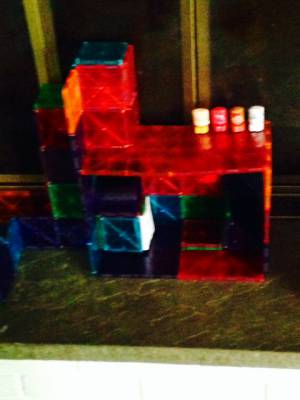
Building blocks are as basic as toys get. So basic, that sometimes their value in play can be overlooked. Blocks and the large variety of building toys should be on your radar because they are great learning tools.
Building helps children with fine motor skills. Coordination, sequenced movement and strength are important for dressing, buttoning, tying shoes, opening lunch containers and writing. Choosing and manipulating blocks helps build these fine motor skills.
Cognitive skills such as spatial awareness, attention, planning and mental flexibility are necessary to walk, talk, learn to draw, practice math, make friends have fun and basically get through the day in one piece. Building toys are an engaging way to practice all of these thinking skills.
Play skills as children are the dress rehearsal for social skills as adults. A big building site can offer a microcosm of a family, a relationship or a workplace. It sounds dramatic, but negotiation, leadership, cooperation and empathy can be test-driven during a big play project like building. All these skills you do need in a grown-up life.
Building toys offer children the opportunity to communicate in a variety of ways. Children working together to create something new need to listen and remember. They must ask for what they need and sometimes, ask for help. Symbolic, or pretend, play helps children learn that one thing can stand for another. That the creative process is important. What they build can be more than a wooden box with four sides. It can represent a street, a town, the moon--or a whole imaginary world. Symbolic play helps develop creative thinkers and learners.
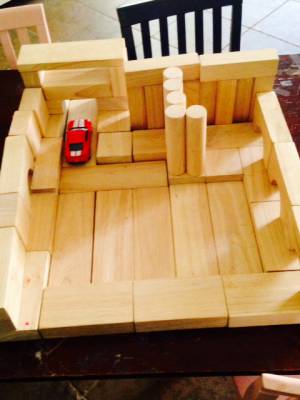
Block play can help focus children and engage their senses. Sensory-based play is, at times, most important for children with learning differences. Exploring different weights, shapes and textures can help keep children involved with their peers in play. Building materials with weight (large wooden blocks) or blocks with magnets (like Magna Tiles) help the brain-body connection in children. The more comfortable a child feels in his body, the longer that child will focus and learn.
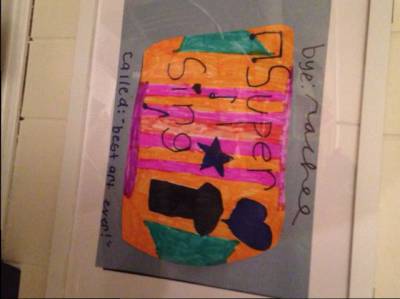
Door hinge frame for children's art work
Preschool is prime arts and crafts territory. If your child is bringing home enough construction paper to wallpaper your house, try some of these fun ideas to keep a record of these so-cute years, but not get lost under a heap of paper.
1) A high wire: Stretch a clothes line or length of colorful ribbon across your play room high enough so that you can walk under. Use clothes pins to clip art work to the ribbon. It brightens up the room and the work is easy to rotate.
2) Digital Frames: Take photos of your child holding her art work. Load the shots into a digital photo frame for all to see. Save a few special masterpieces to hang up, but record the rest digitally and trash the evidence.
3) Door Hinge Frames: Buy a few frames that open in front. They come in all different sizes and colors now. You can easily open the frame and change the picture whenever you like. A display of 2-3 "door-hinge" frames can be a nice permanent addition to your decor.
Whatever you do, don't just start filling up giant under the bed boxes. They just multiply under there like rabbits. By the time your child is in third grade, the art work will be out of control. Not that I did that.






